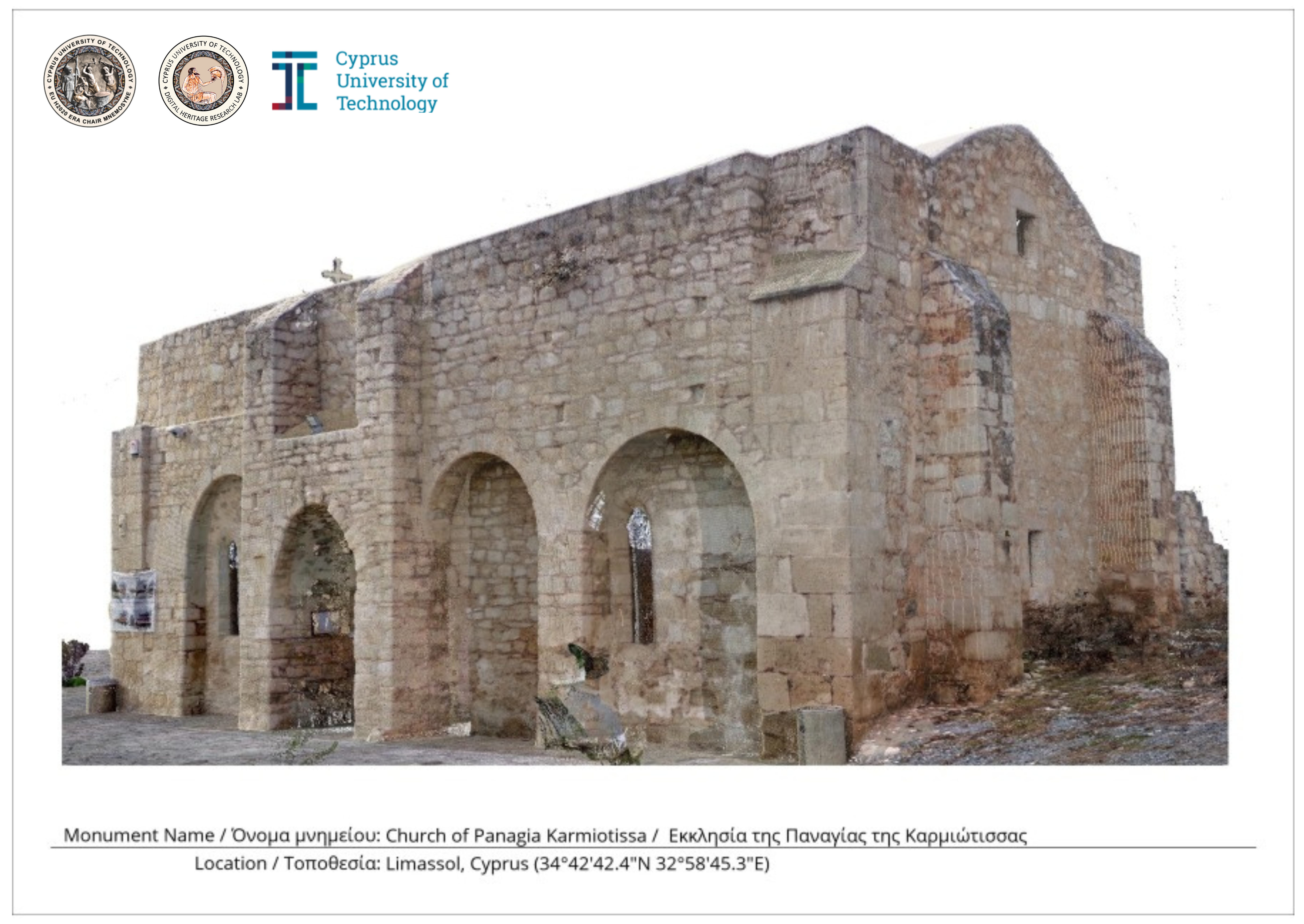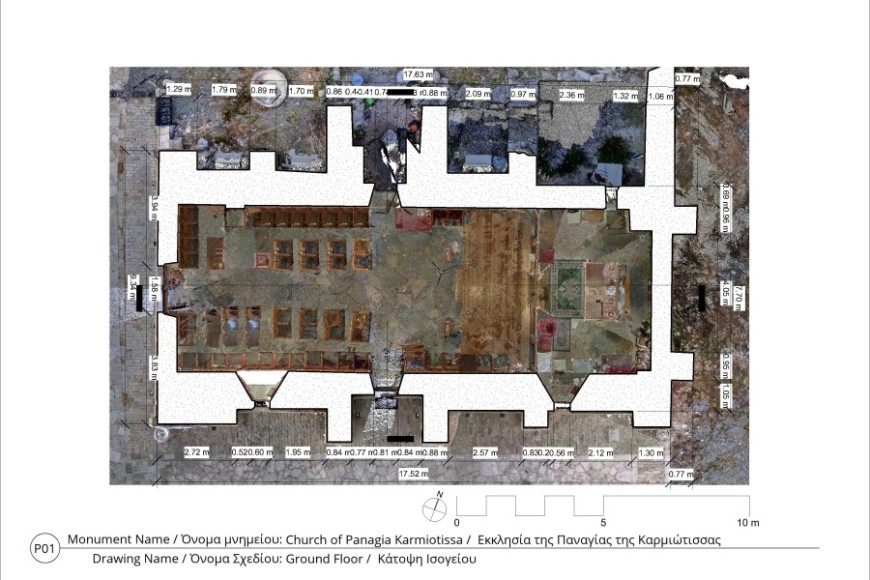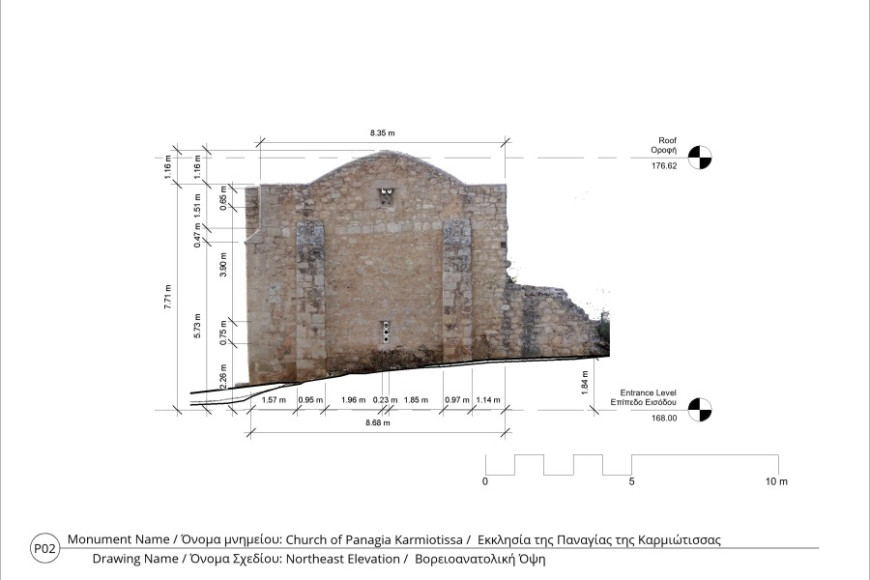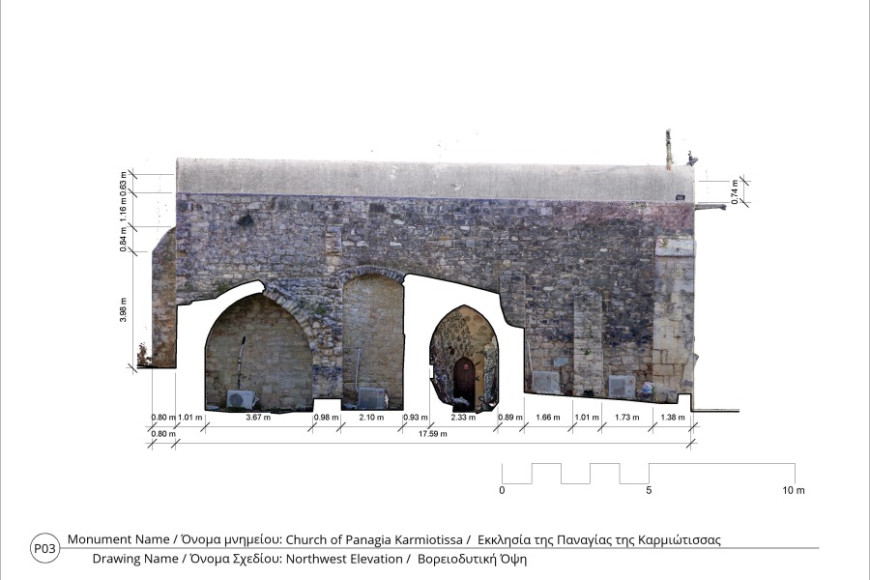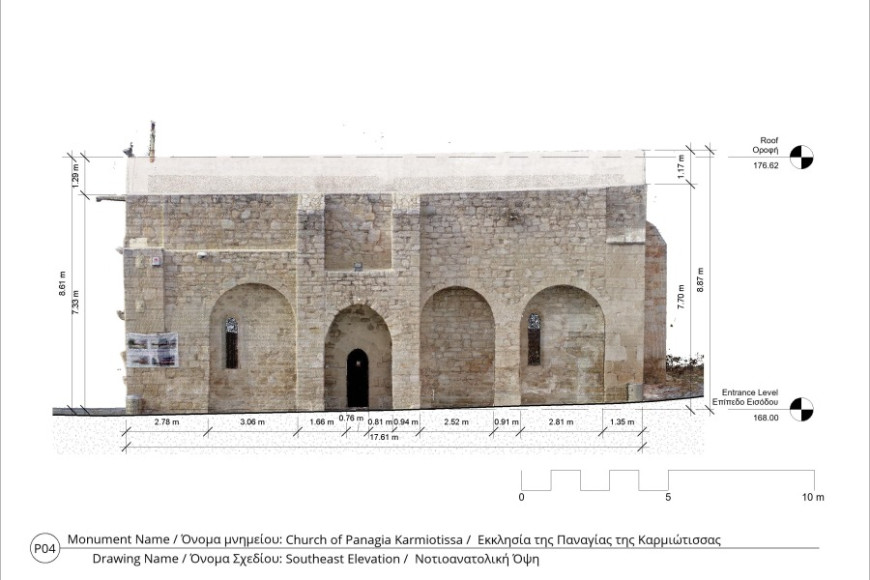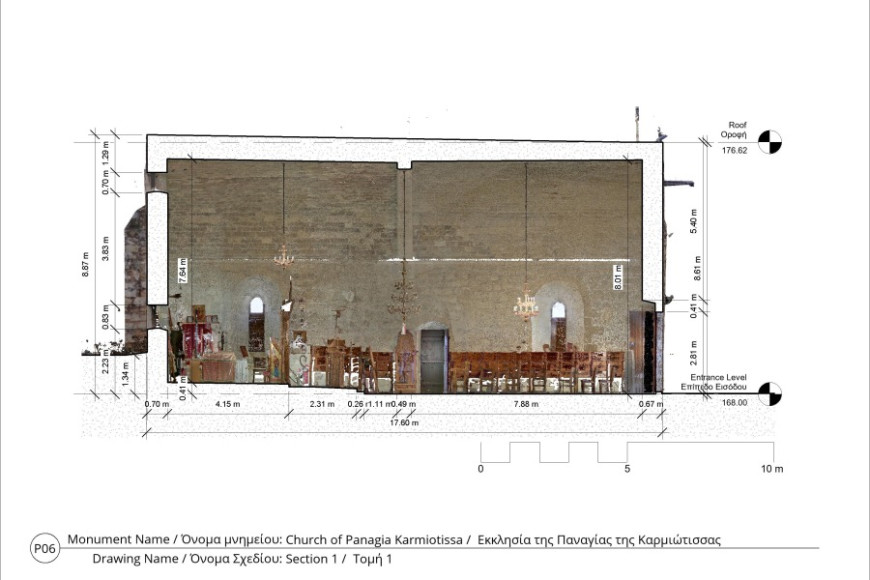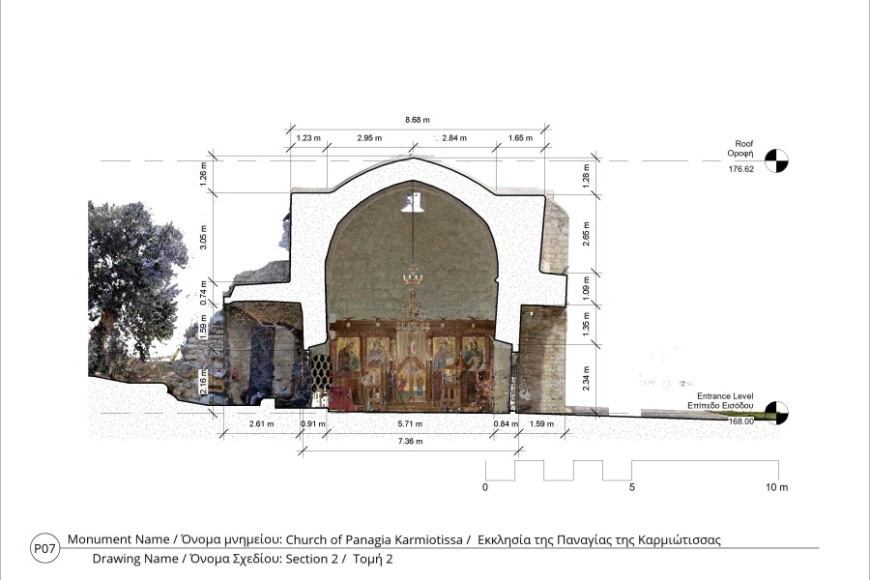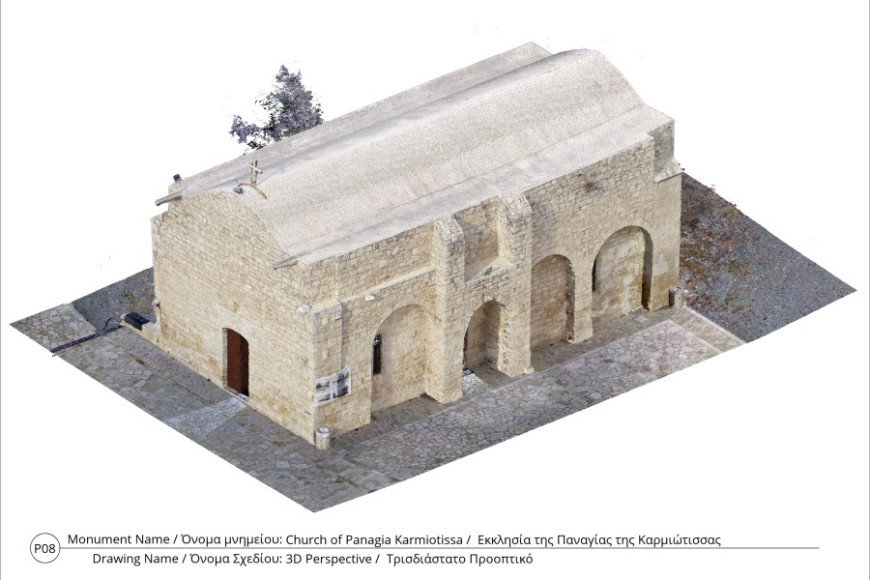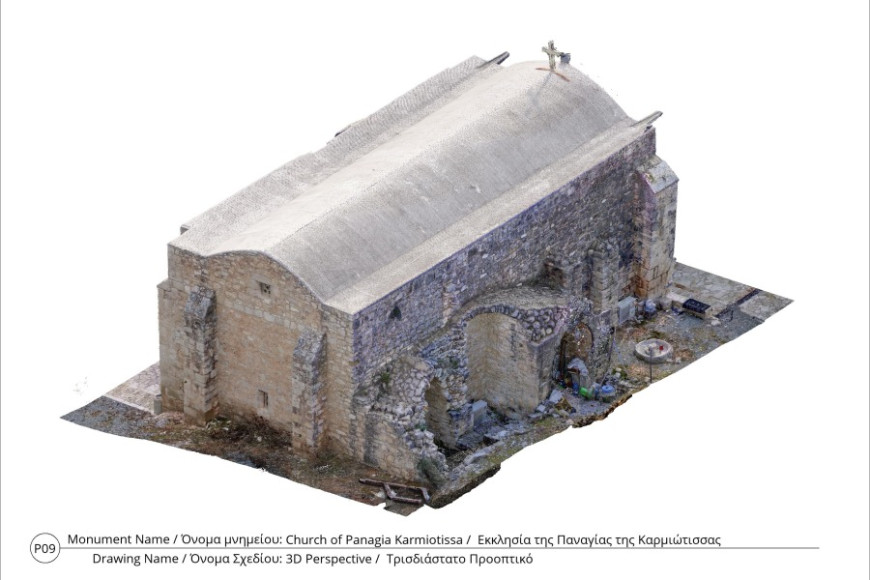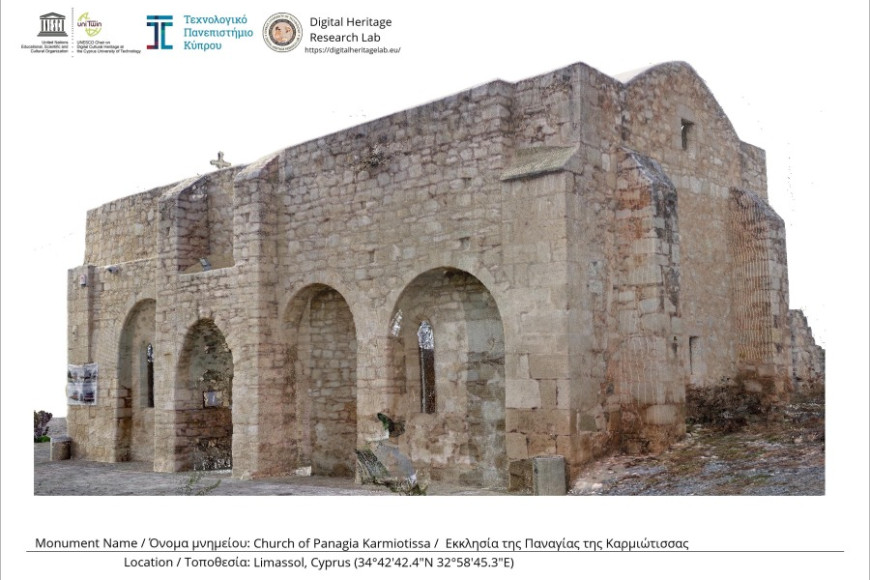1. Introduction
The church of Panagia Karmiotissa is dedicated to the Merciful Mother of God (Panagia Eleousa). It is located north of the area of Pano Polemidia, on the outskirts of the city of Limassol, in Cyprus. The foundation of the church is dated to the period spanning from the late 13th century to the early 14th century. It was erected by Roman-Catholic monks of the Order of Carmelites, who migrated to the island following their expulsion from Mount Carmel in Palestine. The monument is currently the sole remnant of the Monastery founded by the Carmelite monks and is therefore considered an important vestige of the establishment and presence of the Mendicant Orders on the island during the Frankish period.
History and structure
The monument, which was fully constructed from regular ashlars, is a pointed barrel-vaulted structure, unusually spacious for a rural Cypriot church. The two additional sections attached to its north wall, most probably two adjacent chapels, are preserved today in a ruinous state. A doorway on the north wall (there are two more doors opened on the west and south walls), which was later sealed, connected the interior of the church with the two chapels. The corners of the west wall bear the bases and arches that may have supported a gateway or a narthex. One of the upper arch cantilevers is decorated with a figure, most probably that of a Carmelite monk, preserved in bad condition. The interior of the church is not decorated and there are no traces of plaster, indicating thus, that it has never received a painted decoration. The monument has been restored several times between 1952 and 2002.
According to the oral tradition, a settlement was also built within the same area because of the existence of a spring, the water flowing from which, was and is still believed to be holy. Through a water channel, the sacred water was also transferred to the centre of the nearby city of Limassol, and more specifically to the church of Ayia Napa.
The church belongs to a cluster of monuments and sites of the wider Limassol area associated with the Lusignan ruling family and the Frankish elites, while it is also connected with the religious life of the Latin (Catholic) population of the island of the 13th and 14th centuries. The digitization and documentation of the church of the Virgin Karmiotissa could thus allow shedding light on this important part of the Cypriot history, during which the island has been flourishing.
3. Estimation of Complexity & Quality
The following radial charts are base on the based on the EU 3D Study/VIGIE 2020/654
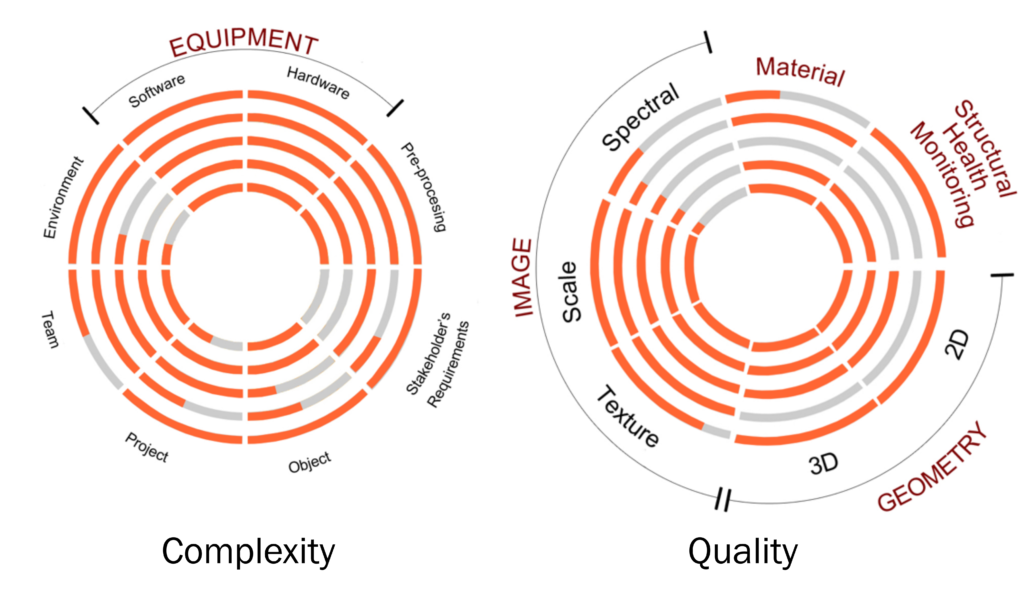
6. Research Outputs
Videos
Accessibility and Reuse
This case study has been submitted to the local aggregator (APSIDA) and successfully harvested into the Europeana platform under CC BY-NC-SA 4.0 license.
7. Bibliography
- Olympios, M., 2015. “Rummaging through Ruins: Architecture in Limassol in the Lusignan and Venetian Periods,” in Lemesos. A History of Limassol in Cyprus from Antiquity to the Ottoman Conques, pp. 362–500.

